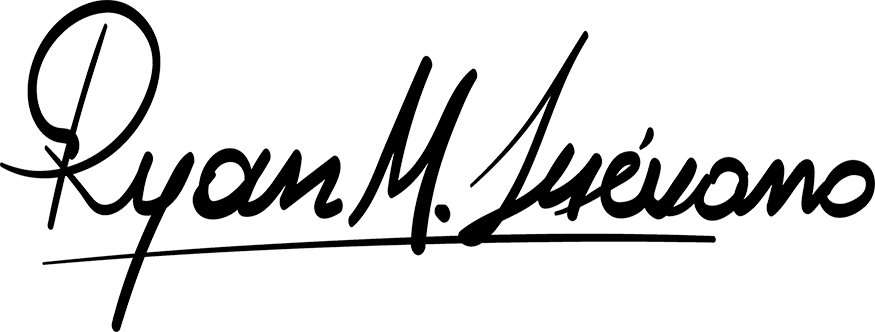‘MERRILY’ REVISITED AT THE WALLIS
REVIEW: MERRILY WE ROLL ALONG
BY RYAN M. LUÉVANO
The show everyone’s talking about right now is Stephen Sondheim and George Furth’s 1981 Broadway flop Merrily We Roll Along. Within weeks of this production opening at the Wallis Annenberg Center for the Performing Arts, the documentary Best Worst Thing That Ever Could Have Happened by original cast member Lonny Prince was released in movies theatres across the country. The lauded documentary sheds light into what this show’s opening and swift closing meant to everyone involved. Now actor, turned director, with a Tony nomination, Michael Arden mounts a production of Merrily at the Wallis, brings new life into this almost forgotten gem of a musical.

Aaron Lazar, left, and Wayne Brady.
So why did the musical only last on Broadway for 52 previews and 16 performances? The accepted explanation here is twofold: first, producers believed that the musical’s method of storytelling by reverse chronology (starting at the end and going forward from that point) confused audiences; and second, the casting of twenty-year-olds (kids) to play adults was not believable to audiences. And there you have it, with these two elements; audiences were known to leave before the show was over generating bad word-of-mouth and even worse press. Fast-forward thirty-five years later to Arden’s production at the Wallis, we ask the question: “Does Merrily work now?” The answer is yes.
Not only has Arden addressed the issues that originally crippled the musical, but because audiences have changed so much, the idea of telling a story in reverse is no longer difficult to follow. The actors in this production are appropriate to the age of the characters and, with Dane Laffery’s elegant period costumes; we follow them clearly in an epoch from 1973 to 1959. The set design, also by Laffery, first appears cluttered with its nine vanity mirrors that are scattered throughout the stage with clothing racks alongside. However, when it is all cleared away at the end of the show we realize the symbolism of all the clutter and the mirrors—the “Our Time” finale becomes uplifting in every sense of the word.

Donna Vicino, left, and Aaron Lazar.
Arden also incorporates a shadow dance ensemble cast that represents younger versions of the three primary characters Frank, Charley and Mary. Throughout the musical the three younger actors serves as axillary characters (assistants, waiters, reporters etc.) for the main characters, then in certain songs they become a dance ensemble. And it all comes together in the finale when these three ensemble characters replace the main characters. Audiences are able to witness a full transformation from the bitter end to the where it all began, when optimism and friendship ruled supreme. The choreography by Eamon Foley embodies the spirit of youth with its simple, effervescent steps and energy.
The show begins for me with Wayne Brady’s (Charley) rendition of “Franklin Shepard, Inc.”. Here, his sense of comic timing and mastery of Sondheim’s wordy songs are clearly evident— he nailed it—entertaining as hell! Brady shows audiences that he can do it all: he’s a powerful Charley, vocals are dramatic and engaging, “Good Thing Going” is warm and heartwarming, even the second time. Aaron Lazar as Franklin is real and compelling. He takes us through every step of his story and we too feel a sense of loss as we see what he gives up to reach his success. Donna Vivino (Mary) completes the trio with her no holds barred approach to this character—strong vocals that follow through with her character. Saycon Sengbloh (Gussie) is a force to be reckoned with in the best manner possible—a robust performance that matches her voice—she gets her moment to shine in the “Act Two Opening” and she glistens.

Saycon Sengbloh, left and Aaron Lazar.
WHAT ABOUT THE MUSIC DIRECTOR?
Music director and pianist Adam Wachter expertly prepared this cast in singing this challenging show. Wacher has taken singers who’ve never performed in a Sondheim show and brought them to greatness on stage—marvelous vocals through and though. Conductor Matt Gould effectively leads the show’s music yet gives the impression that he’s more comfortable conducting the singers than an orchestra— here stiff beating leads to a rigid ensemble sound and balance. What’s more, in this Merrily, we get no overture—perhaps a director’s choice, but still yearned for.

Wayne Brady, left, Aaron Lazar and Donna Vivino.
If you’re curious about Merrily We Roll Along, or just want to know what it’s all about, this production at the Wallis Annenberg Center for the Preforming Arts is a must see— rich and exciting. Director Michael Arden digs deep to draw out the musical’s themes of ever-lasting friendship and the message that “growing never stops.”
 TICKET INFORMATION:
TICKET INFORMATION:
Wallis Annenberg Center for the Performing Arts Bram Goldsmith Theater
9390 N. Santa Monica Blvd, Beverly Hills, CA, 90210
November 23 – December 18, 2016
Performance Schedule: Tues – Fri at 8pm; Sat 2pm & 8pm; Sun 2pm & 7pm
Online – TheWallis.org
By Phone – 310.746.4000








